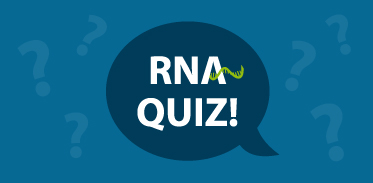In this chapter we will finally move to the lab and discuss the key steps in RNA extraction and considerations to take when choosing how you will isolate/extract, and store your RNA prior to RNA sequencing.
First, you need to determine your overall goal(s) and plan out the downstream steps prior to choosing an RNA extraction method.
- Are you interested in analyzing mRNA only, total RNA, or a specific subset of RNAs (i.e., small RNAs such as microRNAs)?
- Will you be working with samples that allow isolation of high-quality RNA or with challenging sample types that are prone to RNA-degradation or fixed material?
- What type of enrichment, if any, is desired (i.e., ribosomal RNA-depleted RNA, poly(A) RNA, etc.)?
The answers to all of these questions will help determine what type of RNA extraction method to utilize.
Check out our third Chapter focusing on Experimental and Data Analysis Planning and our Checklists to map out your workflow prior to beginning any wet lab procedures. The table below contains useful tips on what to consider when choosing an RNA extraction method.
| Research Interest | Parameter | Considerations |
| Are you interested in analyzing mRNA, total RNA, or a specific subset? | mRNA and total RNA | The average length of mammalian mRNA is ~2200 nucleotides. In general, RNA molecules can range between 15 and 17 000 nucleotides. |
| Small RNAs only | Small RNAs can be as short as ~15 nucleotides and typically range between 20 – 30 nucleotides for eukaryotes. In bacteria, small RNAs can be up to ~300 nucleotides. Make sure your extraction method is suitable for small RNA. | |
| Membrane-associated mRNAs | Basic hot phenol extraction can yield more membrane-associated mRNAs as the procedure facilitates the membrane detachment ¹. | |
| Will you be working with high quality, intact samples or low quality, degraded samples? | High quality (e.g., bacterial cultures, tissue / cell cultures, freshly frozen material) | Some sample types might need specialized disruption, e.g., bacteria / plant require mechanical or enzymatic disruption of cell wall. |
| Low quality (e.g., formalin-fixed paraffin-embedded [FFPE] samples, biopsy samples) | Challenging and fixed sample types contain shorter, non-intact transcripts. Ensure the extraction method does not eliminate shorter fragments. Extract from a higher input amount for FFPE samples (some RNA molecules can be crosslinked and this inaccessible during library preparation). | |
| What type of enrichment, if any, will be needed? | No enrichment (total RNA) | Ensure the RNA extraction method isolates all size transcripts. |
| Ribosomal RNA depletion | Ribosomal RNA depletion can also be used for low quality RNA samples and is advised for best practice when the isolated RNA has a RIN / RQN value < 8. | |
| Poly(A) enrichment | Ensure that the resulting RNA is high quality (RIN / RQN > 8) to use poly(A) enrichment. | |
| What type of sequencing will be used? | Short-read sequencing (50 – 500bp) | Short-read sequencing is also suitable for degraded samples. |
| Long-read sequencing (>500bp) | Requires intact RNAs, mild lysis and RNA extraction conditions should be chosen to preserve full length RNA molecules. |
RNA is a highly susceptible molecule and degrading RNases are ubiquitous. Therefore, special care should be taken to inactivate RNases during the procedure and avoid contamination of the extracted RNA. Harvesting the samples by flash / snap freezing in liquid nitrogen or on dry ice preserves the RNA integrity by terminating all biological processes in the cell, including RNA turnover by endogenous RNases. Alternatively, RNA stabilizing agents can be added to the sample to safeguard the RNA prior to extraction. These chemical solutions permeate fresh (non-frozen) tissues, cells, and liquids and inactivate RNases in the sample and allow storage even at room temperature or in a refrigerator before RNA extraction.
There are numerous methods available for extraction RNA from your sample, but the basic steps remain fairly conserved:
➊ Cell disruption:
Disruption of tissues and lysis of cells is a critical step in the RNA isolation process as it impacts both the quality and quantity of isolated RNA. The commonly used forms of cell lysis are either chemical, mechanical, or enzymatic lysis. The choice between these two possibilities will ultimately depend on the sample you are working with. In the end, a homogenous solution with no visible particulates should be obtained.
➋ Removal of DNA and proteins:
Ensuring no contamination is carried over into your final RNA sample is important, and this is typically achieved by a single-step technique using an acidic solution consisting of guanidinium salts, acetate, phenol, and chloroform. Guanidinium salts are chaotropic chemical compounds that denature proteins including nucleases and thus have a protective function in nucleic acid isolation procedures. Phenol and chloroform are organic solvents that trap and separate proteins and lipids while nucleic acids stay in the aqueous phase. Acetate is used to generate acidic conditions. At pH 4-6 also genomic DNA (gDNA) will be trapped in the organic phase while the RNA will still be retained in the aqueous phase. This procedure can thus minimize the carry-over of gDNA for a highly pure RNA preparation.
Phenol-free and column-based RNA extraction methods also use denaturing agent but rely on binding nucleic acids to silica-based columns instead. These methods are often used by researchers as they offer a fast and highly convenient extraction, however, additional DNase treatment steps are required for challenging applications such as RNA-Seq as the gDNA is usually not removed as efficiently.
![]()
➌ Denaturation and inactivation of RNases:
Due to the unstable nature of RNA and ubiquitous presence of RNases, strong denaturants and chaotropic agents (such as guanidinium salts and phenol) are typically utilized in the early steps of RNA isolation to inhibit endogenous RNases.
Successful extraction of RNA relies on good laboratory practices and RNase-free environments. Gloves should be worn at any time and speaking over opened tubes should be avoided.
➍ Precipitation:
RNA is concentrated and further purified by precipitation with ethanol or isopropanol. Alternatively, RNA can be bound to a silica column. In presence of ethanol, nucleic acids stay bound on the column and can thus be washed and freed from contaminants. In absence of ethanol, nucleic acids are eluted.
When minute amounts of RNA need to be purified, precipitation is the method of choice as losses are reduced compared to column-based methods. Further, the use of carriers, such as glycogen increases the recovery of nucleic acids and facilitates handling of the pellet formed upon precipitation.
➎ Quality Control:
Following extraction, the RNA should be quality controlled to ensure purity and integrity. RNA preparations should be free of salts, metal ions, and organic solvents, or other contaminants, which can be carried over from RNA extraction. Several sources of contamination can be detected with a UV-Vis spectrophotometer. An acceptably pure RNA sample should have an A260/A280 ratio between 1.8 and 2.1. The A260/A230 ratio should be approximately 2. Several common contaminants including proteins, chaotropic salts, and phenol absorb strongly between 220 and 230 nm and can often be identified as peaks in this region. Contamination with any of these generates a lower A260/230 ratio. As these contaminants can have a negative impact on the downstream processing steps in an RNA-Seq workflow, they should ideally be removed by an additional purification step, such as precipitation for best quality results.
The integrity of the RNA can be assessed by a variety of methods. Microfluidic assays, such as Bioanalyzer or Fragment Analyzer RNA assays, are most commonly used. Based on the ratio of the rRNA peaks the RNA quality score (RIN or RQN) is determined. Figure 1 shows exemplary traces from a microfluidic RNA assay for high and low quality RNA on Bioanalyzer.
When assessing your extracted RNA, choose the kits suitable for the desired size range and the expected RNA amount and stay within the specified detection range.
Figure 1 | Bioanalyzer traces of extracted RNA run on an Agilent RNA Pico Chip. RNA was loaded and analyzed according to manufacturer’s instructions, the RIN values and rRNA ratios are shown for high quality and poor quality RNA.
➏ Storage:
After extraction, the RNA is ideally stored in a buffer at pH 7 at -20 °C or -80 °C and freeze / thaw cycles should be kept at a minimum, e.g., by storing the RNA in various aliquots. Additionally, reducing agents, such as DTT, chelators, such as EDTA, and RNase inhibitors can be added for long term storage. As these compounds interfere with optical density measurements, these additives are best supplied after the concentration measurement and should be added to the buffer for the blank when remeasuring.
The extraction method chosen will strongly depend on your sample type and overall goal, so be sure to read up on which extraction method is right for you.
Sample type-specific considerations
Plants
Plants can be considerably challenging due to the presence of secondary metabolites, polyphenols, and polysaccharides. Based on physical and chemical properties of these inhibitors, which are similar to nucleics acids, these inhibitors can coprecipitate with RNA irreversibly. Due to the negative influence they can have on downstream steps such a library preparation, care should be taken to remove them from the RNA. Dedicated kits for RNA extraction from plants and phenol/chloroform-based approaches are especially useful to remove these inhibitors.
Blood
RNA can be extracted from whole blood or the blood can be preprocessed to isolate serum, plasma, or buffy coat peripheral blood mononuclear cells (PBMCs). All of these sample types have their specific requirements, e.g., serum and plasma often contain only low amounts of RNA which can be fragmented, protein-bound or encapsulated in extracellular vesicles. Therefore, specialized kits suitable for low RNA quantities and short fragments should be used. Blood cells in general contain more DNA than RNA, so in contrast to other eukaryotic cells, gDNA carry-over in RNA preparations is very common. Additionally, the high amount of DNA and proteins can lead to highly viscous lysates and therefore, the input amount should be reduced. Also, globin mRNA which encodes for subunits of hemoglobin is highly abundant in blood samples and can amount to 30-80 % of reads in an RNA-Seq experiment. To effectively remove globin already during the prep, red blood cell lysis is often employed. For best results, freezing should be avoided. In case when red blood cell lysis buffer is used to remove globin mRNA, using fresh, non-frozen blood is mandatory. RNA stabilizing agents can be used to preserve the RNA, but these may interfere with the lysis. In this case, a different globin depletion strategy should be used.
Formalin-fixed paraffin-embedded (FFPE) tissue
FFPE samples pose several challenges to RNA extraction: cross-links are introduced between macromolecules during fixation, the RNA is often highly degraded, and gDNA contamination is common during extraction. Therefore, the appropriate RNA extraction kit should be used for FFPE samples, e.g., a kit that is suitable for fragmented RNA and minimizes the carry-over of gDNA such as Lexogen’s SPLIT RNA Extraction Kit. It would also be beneficial to use a kit specifically designed for FFPE samples, where deparaffinization and treatment with Proteinase K are essential parts of the workflow.
As FFPE samples are commonly used to store precious clinical and biobank samples, solutions to work with this sample type are in high demand.
Are you ready to become an RNA Expert?
Sign up and gain access to helpful checklists in PDF format that can assist you in your experiments. In addition, you’ll have the opportunity to download the RNA LEXICON E-BOOK in PDF format as well.
Literature:
¹ Scholes, A.N., Lewis, J.A. Comparison of RNA isolation methods on RNA-Seq: implications for differential expression and meta-analyses. BMC Genomics 21, 249 (2020). https://doi.org/10.1186/s12864-020-6673-2





